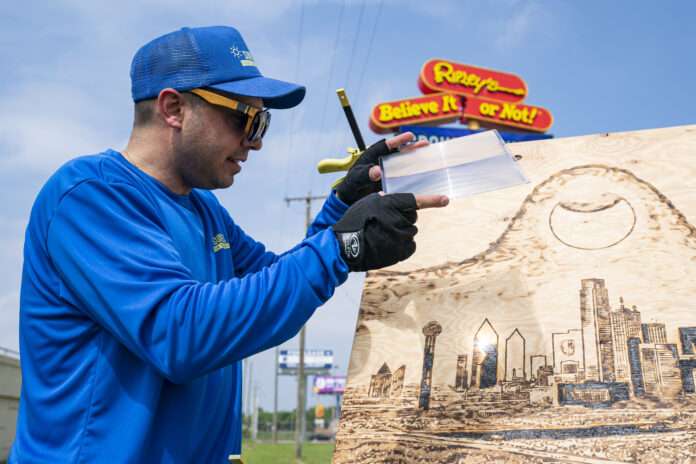As North America looked to the skies for the total solar eclipse, an innovative art activation captivated audiences at Ripley’s Believe It or Not! Blending science, art, and ancient photographic techniques, Michael Papadakis, also known as @Sunscribes, captured the total solar eclipse in his signature way — harnessing the power of the sun to create a unique piece of art for Ripley’s exhibit collection.
“With an event as rare as the Great North American Eclipse — only the second total solar eclipse in the U.S. in less than seven years — we knew we needed to capture it for the Ripley’s collection in some way,” said Director of Ripley’s Exhibit Collection, John Corcoran.
Using a technique known as heliography, Papadakis uses an array of mirrors and lenses to focus the sun’s powerful rays onto a wooden canvas. With meticulous preparation and constant movement, he can use a controlled burn like a paintbrush.
Papadakis’s fusion of art and science is truly unbelievable and a testament to Ripley’s enduring fascination with the cosmos. Also in Ripley’s collection, guests can find a 3,197-pound meteorite, the only book that’s been on the surface of the moon, and one of the company’s most expensive exhibits: the only surviving first-generation recordings of the Apollo 11 expedition, purchased at auction for $1.82 million.
But, immortalizing the fleeting moments of a total solar eclipse and transforming them into a masterpiece is no easy task.
“In 2017 I was privileged to catch the total solar eclipse just outside of Cheyenne, Wyoming,” Michael Papadakis explained. “During that eclipse, I was able to focus sunlight and create a burn up until 99% of the sun’s rays were eclipsed by the moon. This year, thanks to Ripley’s Believe it or Not!, I was able to create a much larger piece of art — taking my time throughout the various phases of the eclipse, holding the lens steady during totality, discovering what oddities appear through my lens as the moon fully eclipsed the sun.”
The projection of the 2024 total solar eclipse could be seen through Michael Papadakis’ lens during totality, when sunlight could not be harnessed due to the moon’s shadow.
Papadakis’ total solar eclipse piece will soon on go display where it was created — at Ripley’s Believe It or Not! in Grand Prairie, Texas.






